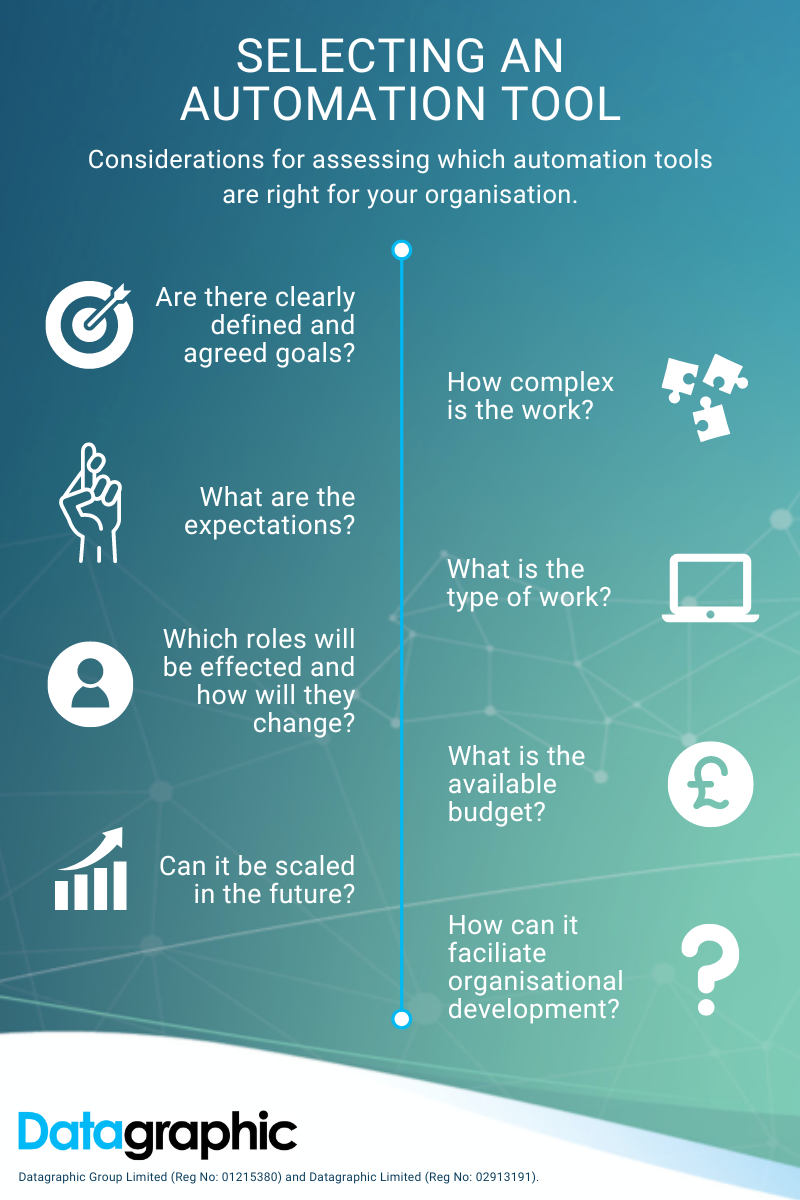Selecting the right automation tools for your organisation.
Business automation technologies have been helping people work faster and smarter for decades. That said, employees are often still distracted by manual tasks.
Following the pandemic, however, organisations now understand what can be achieved by introducing automation into the workplace.
In fact, CBI and Oracle reported that adopting digital technologies and better management practices could add £100 billion to the UK economy and cut income inequality by 5%.
In response to this, organisations of all shapes, sizes and sectors are investing in technology to increase competitiveness.
If you’re considering a digital transformation project, download our free guide to the benefits of business automation.

Choosing the right techniques for your organisation’s needs
Initially, don’t worry about which type of technology.
Instead, focus on learning the end goal of where these technologies can work in your organisation and add value to your current capabilities. Consider your organisation or, on a smaller level, by department, and assess where you can deliver the best results.
You need to understand how the technologies can meet the goals of different projects. Mismatched technology can ironically lead to inefficiency.
A too-complex tool can over-engineer a process and cost much more. If it is too basic, it might fall short of the objective. Therefore, it is best to work through criteria to identify which approach will bring the desired outcome.
Factors to consider for automation projects
- Business goals. You will need clear and consistent goals on what the automation will achieve.
- The complexity of the work. Would a rule-based approach work, or is more creative thinking needed?
- Staff involvement. Do staff have the technical skills, or do you need a third-party expert?
- Type of work. Would the technology replace simple, repetitive tasks or more strategic ones?
- Project expectations. Do you expect immediate change or wider transformation?
- Budget. How much resource is there for the project?
- Scalability. Can you scale the technology as the organisation needs it, or is it a one-time solution?
- Organisational development. Will it bring new processes, projects, and more agile structures, offer employee development, and create positive cultural change?
Working through these will clarify which type of automation technology to use to deliver you the best results without large capital costs and lengthy implementation times.
For many organisations’ AI and ML are often too complex for their automation projects, and RPA is more suitable as a starting point.

Contact us to discuss how your organisation can get started with digital transformation.



